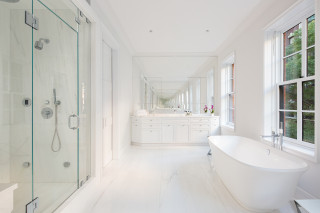In to-day’s New York Post, a story talks about the mounting evidence that there are two US economies operating side by side. They are correct.
While Main Street consumers struggle with high unemployment and mainstream retailers are forced to mark down merchandise to spark even mid-single digit sales gains, the luxury market is enjoying flush times — posting solid double-digit sales increases despite the high ticket prices.
For example, Hermes — whose luxury handbags frequently command price tags of $10,000 and up — said yesterday its sales surged a stronger-than-expected 27 percent during the first half of the year, with growing demand from super-rich shoppers in the US helping drive the results.
n June, Jaguar sales soared 53 percent and luxury hotel room rates rose 6 percent while Ford recorded sales gains of just 13 percent and economy hotel room rates slipped nearly 3 percent.
And while nationally the job picture remains bleak, the New York State Labor Department reported that the financial services sector added 2,600 Wall Street jobs in June.
At upscale Saks, sales are up 6 percent year-to-date — in line with upbeat reports this month from other luxury labels like Burberry and Armani — while more middle market JCPenney reported year-to-date sales gained just 1.6 percent.
And yesterday, Apple said quarterly sales at its upscale retail stores surged 73 percent to $2.58 billion, versus a first-quarter sales gain of 6.9 percent reported a month earlier by Best Buy.
Upscale shoppers also appear to be in the party mood.
“In the past week, we’ve sold more than five cases of Bordeaux priced at $12,000 each,” says Peter Morell, owner of Morell & Co., an upscale wine shop in Midtown. “For July, that’s pretty good.”
Sales at high-end retailer chains have soared 13 percent year-to-date, according to Customer Growth Partners. At the same time, sales at lower- and mid-price stores have risen by more modest single-digit percentages as most shoppers focus on basics.
That’s evidence that a gulf between the rich and the poor continues to widen, with the former mostly insulated from the economic headwinds that hamper the latter, says Craig Johnson, founder of the Customer Growth Partners, a Connecticut-based retail consultant.
“The high-end consumer is back this year, and it’s mainly a question of psychology,” Johnson says. “If they’re not spending, it’s because they’re simply not in the mood.”
While most shoppers weigh needs for clothing, electronics and groceries against weekly paychecks and health-care costs, luxury consumers’ spending habits can be affected most by emotions like guilt and shame.
The reality is we are seeing rather strong earnings this week….about 75% of companies are reporting good gains, and while they may not all be the double-digit-blowout gains a-la-Apple, they indicate a reasonably strong economy. Morgan Stanley, Goldman Sachs, Blackrock, etc are all doing rather well.
With reduced staffing, and streamlined costs achieved in the depths of the recession, the bottom line always improves…..and those in power make more money, feel more confident and spend more. The two economies being discussed are also very relative to education levels. Unemployment in the USA is about 9.5%….yet amongst those with stronger education levels, college degrees, etc, unemployment is less than half that. This bodes well for Manhattan luxury real estate, a city that attracts the very talented and educated from around the USA and the world.
